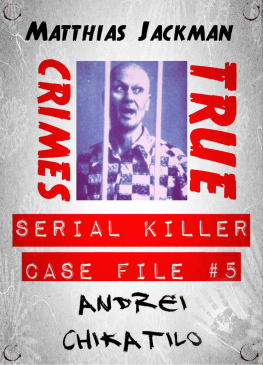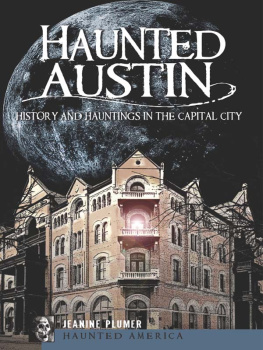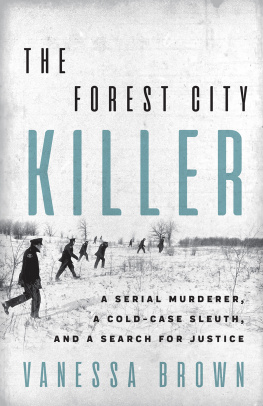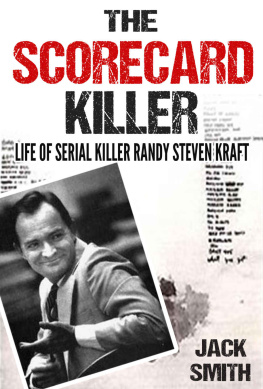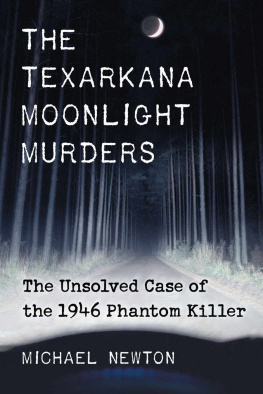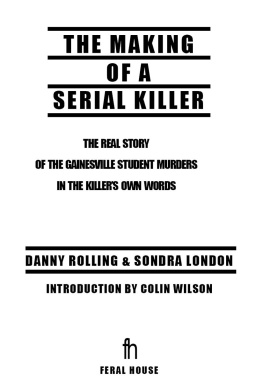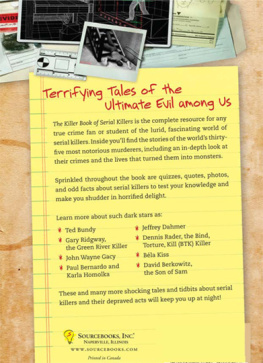
Thank you for buying this
Henry Holt and Company ebook.
To receive special offers, bonus content,
and info on new releases and other great reads,
sign up for our newsletters.

Or visit us online at
us.macmillan.com/newslettersignup
For email updates on the author, click here.
The author and publisher have provided this e-book to you for your personal use only. You may not make this e-book publicly available in any way. Copyright infringement is against the law. If you believe the copy of this e-book you are reading infringes on the authors copyright, please notify the publisher at: us.macmillanusa.com/piracy.
For Shannon, Hailey, and Tyler, with all my love
The crimes still remain a mystery. They are abnormal and unnatural, as compared with ordinary crimes among men. No one, not even the expert, skilled in the detection of crime, can find a plausible motive. The mutilated bodies of the victims are always found in parts of the city where crime is not expected or anticipated, and beyond the fact of the murders we have never been able to penetrate.
John W. Robertson, Mayor of Austin, Texas, November 10, 1885

A panoramic view of Austin, Texas, in the 1880s
PROLOGUE
A killer who gives to history a new story of crime.
I first read about him when I was shown a pamphlet, the pages umber with age, titled Leather Apron; or, the Horrors of Whitechapel. Published in the year 1888, the pamphlet chronicled a series of murders that were then taking place in London. An unknown killer, who was being called Jack the Ripper, had attacked five prostitutes in the citys East End over a three-month period, slitting their throats and mutilating their bodies. On page 10, the author mentioned that London police officials were speculating that the Ripper was the same man who had committed a series of similar murders three years earlier in a small city in Texas.
Why is it that certain sensational events in history are remembered and others, just as dramatic, are completely forgotten? Jack the Ripper has haunted the imagination of the public like no other killer in Western civilization. He is universally considered to be the prototype of the modern-day criminal monster, his exploits the subject of at least a hundred books and dozens of films and plays.
But beginning in December 1884, Austin, Texas, was terrorized by someone equally as vicious and, in some ways, far more diabolical than Londons Ripper. For almost exactly one year, the Austin killer crisscrossed the entire city, striking on moonlit nights, using axes, knives, and long steel rods to rip apart women. On Christmas Eve of 1885, almost exactly one year after the killings began, he brought Austin to the brink of chaos when, in the space of an hour, he slaughtered two prominent women in separate neighborhoods, cutting up their bodies in their backyards before vanishing in the briefest imaginable time.
The story was treated as one of the great American murder mysteries of the late nineteenth century, a blood-curdling whodunit chronicled on the front pages of newspapers from New York to Chicago to San Francisco. Joseph Pulitzer, the famous publisher of the New York World , was so fascinated by what was happening that he commissioned a reporter to produce a 7,000-word article under the headline Why These Assassinations? The Extraordinary Series of Similar Murders in a Texas City. Several journalists proclaimed in their articles that the murders were nothing less than an Edgar Allan Poe tale of terror come to life. One reporter nicknamed the killer the Midnight Assassin who strides at will over Austins sacred soil.
For the first time on record, an American city was forced to confront a brilliant, brutal monster who for some unknown reason was driven to murder, in almost ritualistic fashion, one woman after anothera killer who gives to history a new story of crime, the New York World declared. Baffled Austin police officers sat around a table, attempting to predict what circumstances would make this Midnight Assassin strike again. Anxious citizens came up with increasingly desperate proposals to stop the murders. (One citizen suggested that every woman in Austin be given a large guard dog. Another wanted the city to be lit with newly invented electric arc lamps so that the killer would have no place at night to hide.) Self-proclaimed private eyes arrived in Austin to begin their own investigations in hopes of finding the killer so that they could claim the sizable reward money being offered by the citys businessmen and by the governor of Texas himself. Even a group of distinguished medical doctors in New York City who were known as alienists, experts in the study of mentally troubled minds, gathered in the lecture hall at the New York Academy of Medicine, just across the street from Bryant Park, to discuss the methods of the Midnight Assassin, hoping that they too might somehow uncover his identity.
Before it was all over, at least a dozen men would be arrested in connection with the murders. There would be three murder trials of three different suspects, all of whom would vehemently proclaim their innocence. Along the way, the murders would expose what a newspaper described as the most extensive and profound scandal ever known in Austin, one that ruined the careers of several prominent Austin men and set off sensational allegations that one of the states most well-known politicians was himself the Midnight Assassin. And yes, when Jack the Ripper began his attacks in 1888, London police investigators did wonder if the killer from Austin had crossed the ocean to terrorize their own city.
Who was the Midnight Assassin, and why did he go on such a rampage? Was he a crazed, itinerant outlaw? Was he, as many Austin residents believed, a deranged black man? Or was he well known in Austin societysomeone who lived respectably, dressed neatly, and who periodically felt the need to slip out of his house to slaughter a woman? Was it also true, as rumor had it, that he was quietly caught and then put away by city officials who were determined to avoid more public scandal?
It has taken me years to put the story together, looking for facts hidden away in faded newspaper articles and in old scrapbooks, in the crumbling pages of diaries and letters, in long-forgotten records boxed up in the back storage rooms of libraries and government offices, and in files at the states former lunatic asylum, the once-imposing limestone fortress that loomed over the northern edge of Austin. Some details about the killings were discovered in abandoned sections of cemeteries, the tombstones nearly covered by time. Others were provided by grandchildren and great-grandchildren of residents involved in the Midnight Assassins murder spree. And then there were records that should have been readily available but had curiouslytantalizinglydisappeared.
As the journalists once wrote, it is a story worthy of Edgar Allan Poe, a multilayered Gothic saga of madness and intrigue, panic and paranoia, beautiful women and baying bloodhounds, and flabbergasting plot twists and sensational courtroom drama. In fact, a well-regarded New York mystery writer, Kenward Philp, was commissioned by his publisher to produce a short story, filled with shivery Poe-like prose, based on the Austin murders. The publisher then attempted to sell the story, which was titled The Texas Vendetta, to newspapers around the country.
Next page


